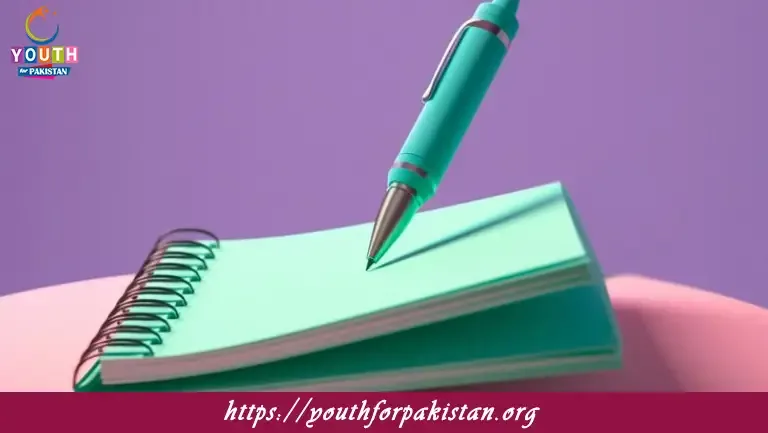Welcome to the Creative Writing MCQs with Answers. In this post, we have shared Creative Writing Online Test for different competitive exams. Find practice Creative Writing Practice Questions with answers in English Tests exams here. Each question offers a chance to enhance your knowledge regarding Creative Writing.
Which of the following is an example of a metaphor?
A) The stars danced in the sky.
B) He ran as fast as a cheetah.
C) The sun smiled down on us.
D) The car was a monster on the road.
In creative writing, what does “show, don’t tell” mean?
A) Describe emotions and actions in detail.
B) State facts directly.
C) Use a lot of adjectives.
D) Write in the first person.
Which point of view uses “I” and “we”?
A) Second person
B) Third person omniscient
C) Third person limited
D) First person
What is the purpose of a hook in the beginning of a story?
A) To introduce the main character.
B) To set the scene.
C) To grab the reader’s attention.
D) To reveal the theme.
Which of the following best defines “plot” in a story?
A) The main idea or underlying meaning.
B) The sequence of events.
C) The time and place.
D) The characters’ dialogue.
What is a “foil” character?
A) A character who opposes the protagonist.
B) A character who contrasts with the protagonist.
C) A character who changes significantly.
D) A character who supports the protagonist.
What is a common characteristic of a dystopian story?
A) A utopian society.
B) An oppressive society.
C) A romantic subplot.
D) A fantasy setting.
What is the climax of a story?
A) The introduction of the setting.
B) The highest point of tension.
C) The resolution of the conflict.
D) The background information.
Which of the following is an example of personification?
A) The wind whispered through the trees.
B) The car zoomed past us.
C) He was as brave as a lion.
D) She sang a beautiful song.
What is an unreliable narrator?
A) A narrator who knows everything.
B) A narrator who is biased or deceptive.
C) A narrator who speaks directly to the reader.
D) A narrator who remains neutral.
In literature, what is an “archetype”?
A) A type of setting.
B) A recurring symbol or motif.
C) A type of conflict.
D) A style of writing.
Which literary device involves a play on words?
A) Irony
B) Alliteration
C) Pun
D) Metaphor
What does “tone” refer to in a story?
A) The sequence of events.
B) The author’s attitude toward the subject.
C) The main character’s personality.
D) The setting of the story.
Which of the following best defines “theme” in literature?
A) The time and place of the story.
B) The central message or insight.
C) The sequence of events.
D) The perspective from which the story is told.
What is a “subplot”?
A) The main sequence of events.
B) A minor plot that supports the main plot.
C) The climax of the story.
D) The background information.
What is “foreshadowing”?
A) Describing a character’s past.
B) Hints about what will happen later in the story.
C) A direct statement of events.
D) Describing the setting in detail.
What is the “setting” of a story?
A) The conflict of the story.
B) The characters’ dialogue.
C) The time and place where the story occurs.
D) The climax of the story.
Which of the following is an example of hyperbole?
A) She was as busy as a bee.
B) I’m so hungry I could eat a horse.
C) The leaves danced in the wind.
D) He has a heart of stone.
What is “dialogue” in a story?
A) The main conflict.
B) The narrative description.
C) The conversation between characters.
D) The setting.
What does “character development” refer to?
A) The setting of the story.
B) The evolution of a character throughout the story.
C) The main conflict.
D) The resolution.
What is a “protagonist”?
A) The main character.
B) The setting of the story.
C) The antagonist.
D) A minor character.
Which literary device involves the repetition of consonant sounds?
A) Assonance
B) Onomatopoeia
C) Alliteration
D) Metaphor
What is an “antagonist”?
A) A supporting character.
B) The main character.
C) A character who opposes the protagonist.
D) The narrator.
What does “internal conflict” refer to?
A) A struggle within a character.
B) A struggle between characters.
C) A struggle with nature.
D) A struggle with society.
What is an “epiphany” in literature?
A) A character’s sudden realization.
B) The climax of the story.
C) The introduction.
D) The resolution.
What is “imagery”?
A) The use of symbols.
B) Descriptive language that appeals to the senses.
C) Dialogue between characters.
D) The sequence of events.
What is a “flashback” in a story?
A) A hint about future events.
B) A scene set in a time earlier than the main story.
C) A subplot.
D) A description of the setting.
What does “mood” refer to in a story?
A) The sequence of events.
B) The time and place.
C) The atmosphere or feeling created.
D) The characters’ dialogue.
What is “satire”?
A) A type of poetry.
B) A genre that uses humor to criticize.
C) A serious drama.
D) A historical narrative.
What is “irony”?
A) The use of symbols.
B) A situation where the opposite of what is expected occurs.
C) A comparison using “like” or “as.”
D) The main theme of a story.
Which of the following is an example of a simile?
A) He is a lion in battle.
B) She runs like the wind.
C) The sun was a golden coin.
D) The leaves danced in the breeze.
What is “allegory”?
A) A narrative with a hidden meaning.
B) A type of rhyme scheme.
C) A character’s internal monologue.
D) A specific setting.
What does “motif” refer to in literature?
A) The protagonist’s goal.
B) A recurring element that has symbolic significance.
C) The main conflict.
D) The resolution of the story.
What is the difference between “prose” and “poetry”?
A) Prose has a regular rhythm; poetry does not.
B) Prose is written in paragraphs; poetry in verses.
C) Prose uses figurative language; poetry does not.
D) Prose has a rhyme scheme; poetry does not.
What is “allusion”?
A) A reference to another work of literature or event.
B) The climax of the story.
C) The use of descriptive language.
D) The main character’s dialogue.
What is “theme” in a story?
A) The main idea or message.
B) The setting of the story.
C) The main character’s personality.
D) The sequence of events.
Which of the following is an example of onomatopoeia?
A) Buzz
B) Bright
C) Silence
D) Heavy
What is “free verse” in poetry?
A) Poetry with a regular rhyme scheme.
B) Poetry without a set meter or rhyme scheme.
C) Poetry that follows a strict structure.
D) Poetry written in stanzas.
What is “first-person narration”?
A) A story told by an all-knowing narrator.
B) A story told by a character in the story.
C) A story told from an outside perspective.
D) A story with no specific narrator.
What is a “cliché”?
A) A unique expression.
B) A common or overused expression.
C) A type of conflict.
D) A literary genre.
If you are interested to enhance your knowledge regarding Physics, Chemistry, Biology, and Computer please click on the link of each category, you will be redirected to dedicated website for each category.










